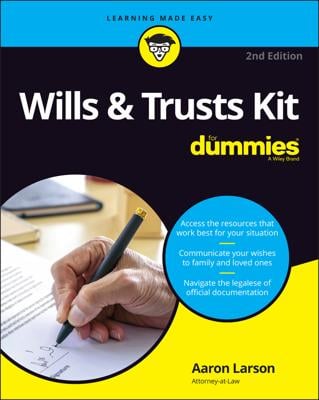The powers the grantor gives you, the trustee, in a trust instrument include the buying and selling of assets, determining distributions to the beneficiaries, and even the hiring and firing of advisors. Distributions to beneficiaries will include income distributions and principal distributions. Your powers as trustee enable you to determine what the beneficiaries receive from the trust and when, and give you the administrative powers ensure the smooth running of the trust.
Powers of a trustee: Buying and selling assets
You, as trustee, typically have the power under the trust instrument to buy and sell assets (except for any unusual asset the grantor wants retained in the trust). Aside from any other specific directions in the trust instrument or state law, you must follow the prudent man rule — that is, to act as a prudent person would in managing their own affairs. In addition, most states have a legal list of investments that are suitable for trusts.
Powers of a trustee: Determining distributions to beneficiaries
The grantor can determine the frequency and amount of the distributions to the beneficiaries in the terms of the trust, or he or she can leave it to your discretion as trustee. If the grantor leaves it to your discretion, your job includes observing any guidelines in the trust instrument and adhering to the overall intent of the grantor.
Some of the types of distributions you may need to make as a trustee include income distributions and principal distributions.
Making income distributions as a trustee
Frequently, trust instruments direct that all income is to be distributed at least quarterly. Alternatively, income distributions may be made at other specified intervals, or at your discretion.
Very often, the distribution schedule is based on the age of the beneficiary so that younger beneficiaries often only receive discretionary distributions (great for paying college tuition while still keeping financial aid options open) , and older beneficiaries may become entitled to mandatory income distributions.
No two trusts are the same, so read the instrument upon your appointment, and reread it periodically to be certain that you're still following the guidelines.
Making principal distributions as a trustee
Distributions of principal, or corpus, are usually in the discretion of the trustee(s). The trust could also provide for no principal distributions, especially if the grantor wants to maintain the principal for a later generation of beneficiaries.
Many trusts are set up with the intent of distributing the trust principal to the beneficiary over a period of time, usually between five and ten years, and at very specific ages. Keep an eye out for this language as you make your plans for the administration of the trust and the investment of the assets — and mark those dates down in your calendar.
Trusts contain different standards for when principal distributions can be made to a beneficiary based on whether the trust has an independent trustee. The following are two reasons for different standards for principal distributions:
With no independent trustee: If there isn't an independent trustee (and the trust is for the benefit of someone other than the grantor), the IRS has identified certain "magic words" that restrict the distribution of principal and keep the trust from being included in the beneficiary's estate for estate tax purposes. The magic words that keep this trust out of the beneficiary's estate are "health, education, maintenance, and support," which constitute an ascertainable standard. This structuring may seem extremely technical, but it's an important point, especially for the beneficiary and his or her heirs.
With an independent trustee: Comfort isn't one of the IRS's magic words. Using the word "comfort" makes a trust taxable in a surviving spouse's estate. Because many grantors feel the ascertainable standard described previously is too limiting, especially in a trust for the surviving spouse, grantors frequently elect to have an independent trustee. This enables the grantor to bestow broader powers of principal distribution without causing adverse tax consequences.
Powers of a trustee: Hiring and firing advisors
The grantor and the person drafting the trust instrument understand that not every trustee will be a wizard at all aspects of trust administration. Trust instruments typically give the trustee the power to hire and fire advisors. Look for this power in your trust instrument.
Your grantor wants you to have any advice you need to run the trust and fulfill your fiduciary duty. If an advisor isn't working out, including one whom the grantor has chosen, you need the power to let the advisor go — whether for personal incompatibility with the trustee or a question of competence.
If you feel you've given an advisor a fair chance to prove himself to you (and fair is defined by you as trustee, unless your trust instrument provides otherwise), then by all means, fire him and hire another one of your choice.

